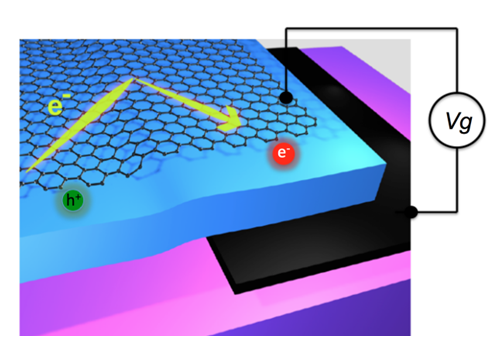Physics World recently revealed the runner-up breakthroughs for 2016. “Negative refraction of electrons in graphene” was selected as one of the top 10 breakthroughs. Among the teams led by Prof. Cory R. Dean at Columbia University, researchers from Shenyang National Laboratory for Materials Science (SYNL), the Institute of Metal Research, Chinese Academy of Sciences (IMR, CAS) participated in the project of demonstrating electronic negative refraction in a sharp ballistic graphene pn junction.
Negative refraction is a property of some artificial meta-materials and can be used to create novel optical devices such as a perfect lens. Electrons in materials can behave as waves and negative refraction should also occur at the interface between an n-type and a p-type semiconductor (a p–n junction). It has proven impossible to see this effect in conventional semiconductors because most electrons are reflected at p–n junctions.
Dean and colleagues created a p–n junction in graphene and ensured that the interface was very smooth to minimize reflections – allowing them to measure the negative refraction of electrons. Negative refraction could be used to bring a diverging electron beam to a sharp focus and this could form the basis of an electronic switch that consumes very small amounts of energy.

Schematic picture of electron negative refraction at the interface of a ballistic pn junction (Image by IMR)